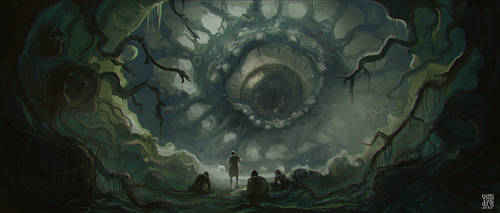Photo manipulation is the application of image editing techniques to photographs in order to create an illusion or deception (in contrast to mere enhancement or correction), through analog or digital means.
Types of digital photo manipulation
Historical tools used for photo manipulation.In digital editing, photographs are usually taken with a digital camera and input directly into a computer. Transparencies, negatives or printed photographs may also be digitized using a scanner, or images may be obtained from stock photography databases. With the advent of computers, graphics tablets, and digital cameras, the term image editing encompasses everything that can be done to a photo, whether in a darkroom or on a computer. Photo manipulation is often much more explicit than subtle alterations to color balance or contrast and may involve overlaying a head onto a different body or changing a sign's text, for example. Image editing software can be used to apply effects and warp an image until the desired result is achieved. The resulting image may have little or no resemblance to the photo (or photos in the case of compositing) from which it originated. Today, photo manipulation is widely accepted as an art-form.
There are several subtypes of digital image-retouching:
Technical retouching
Manipulation for photo restoration or enhancement (adjusting colors / contrast / white balance (i.e. gradational retouching), sharpness, removing elements or visible flaws on skin or materials, ...)
Creative retouching
Used as an art form or for commercial use to create more sleek and interesting creative images for advertisements. Creative retouching could be manipulation for fashion, beauty or advertising photography such as pack-shots (which could also be considered inherently technical retouching in regards to package dimensions and wrap-around factors) One of the most prominent disciplines in creative retouching is image-compositing. Here, the digital artist uses multiple photos to create a single composited image. Today, 3D elements are used more and more to add extra elements or even locations and backgrounds. This kind of image composition is widely used when conventional photography would be technically too difficult or impossible to shoot on location or in studio.
History
Before computers, photo manipulation was achieved by retouching with ink, paint, double-exposure, piecing photos or negatives together in the darkroom, or scratching Polaroids. Airbrushes were also used, whence the term "airbrushing" for manipulation.
The first recorded case of photo manipulation was in the early 1860s, when a photo of Abraham Lincoln was altered using the body from a portrait of John C. Calhoun and the head of Lincoln from a famous seated portrait by Mathew Brady – the same portrait which was the basis for the original Lincoln Five-dollar bill.
The 1980s saw the advent of digital retouching with Quantel computers running Paintbox, and Scitex imaging workstations being used professionally. Silicon Graphics computers running Barco Creator became available in the late 1980s which, alongside other contemporary packages, were effectively replaced in the market by Adobe Photoshop.

